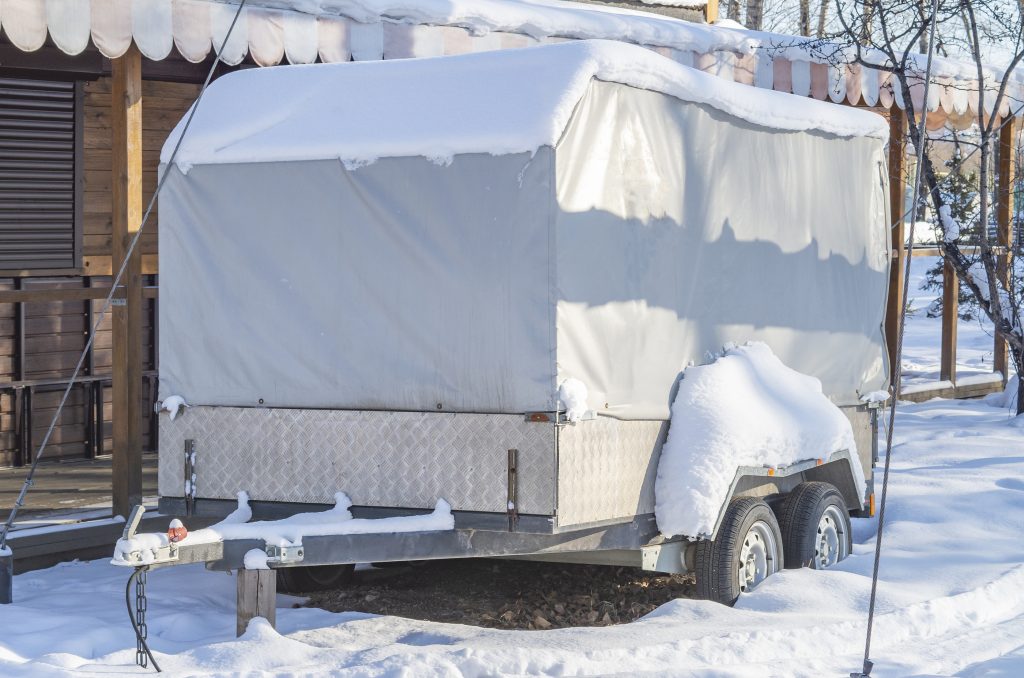
Are you a year-round RVer or do you park your rig once the brilliant fall foliage turns to bare branches? If you haven’t already or are a first-timer, here are some tips on how to winterize your RV as opposed to simply parking it in your driveway.
If you can, park undercover.
Temperature extremes, snow, wind, pollution—it all contributes to ageing your rig. If you’re lucky enough to have a garage that can fit your motorhome, by all means, use it. If it must be exposed to the elements, we highly recommend some sort of cover; there are companies that make specially designed covers and canopies for any size vehicle. If you don’t have room one way or the other, check local campgrounds, RV dealerships, or service centers; many of them rent space for storage.
Clean it out. All of it.
Every bit of food must go, even canned goods, bottled sodas, and other non-perishables. Temperature extremes can wreak havoc on these items and any spills can attract bugs, rot, well, you get the picture.
Take all the soft goods such as extra clothes, towels, blankets, pillows, and seat cushions out and launder. You might want to store them in space-saver bags something similar to keep them fresh until you’re ready to roll again. Take advantage of the clear-out and clean every surface well. There’s nothing worse than set-in stains.
Once it’s clean, close it up.
And tightly: critters have been known to use intake and exhaust vents to set up homes. Even if you have mesh screens, this is the big time: every since vent and opening should be covered with duct tape and anything mice won’t be able to chew through (they love cardboard, by the way). This means the top and bottom of the rig, too. Put a cover on the air conditioner, repair exposed seams, go inside and close vents, seal windows, and plug drains. Don’t forget bugs: they can squeeze in just about anywhere. We recommend spraying for bug spray just in case.
Keep things fluid.
Top off your fuel tank, add a fuel stabilizer, and then let the engine idle just enough to let it run through the system. Top off the radiator with anti-freeze (flush and replace with heavy-duty fluid, don’t rely on the one that’s been in there all year). Check the windshield wiper fluid tank, oil, brake fluid, etc. etc. and make sure they’re all topped off.
Battery-powered.
If the weather in your area is really extreme, it may be better to disconnect, remove, and store the battery in a dry, warm space. Otherwise, disconnect the cables (negative first) and make sure the battery’s water levels are topped off. Make sure the main breaker is switched off and unplug every appliance. Remove dry cell batteries from detectors, alarms, etc. as they are prone to corroding. If you have a generator, portable or onboard, follow the directions on the manufacturer’s booklet to winterize as well.
Tired and true.
Heavy rigs resting on stationary tires wear the rubber down, so unless you’re willing to invest in a new set of tires every season, consider using jacks to support the weight instead. Or, if you have the time and are feeling the love, you could go out and move the rig one-half revolution a couple of times during the winter.
Plumbing is key.
Just as in your home, you have to protect your pipes from freezing weather. Fortunately, it’s a lot easier in a motorhome. Here’s a great guide from the Tiffin Motorhomes on how to winterize your rig.
Don’t have time to winterize your RV?
Many RV dealers offer this service for a nominal fee.







